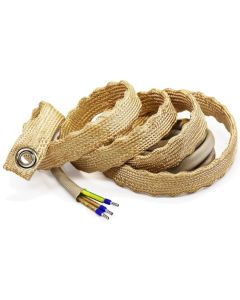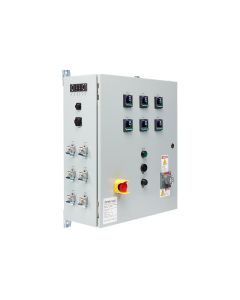Superheated Steam for Food Processing
Steam has many applications in the processing of food products from shortly after harvest to the time it is placed on a table. Unlike saturated steam which is part vapor and part hot water, superheated steam is a dry vapor heated above the boiling point of water. Because it is dry, food processing companies use steam to preserve the quality of their products by using it for dehydration, distillation, pasteurization, and cooking. It can be used to bake potato chips, cook heat and serve dinners, or dry fruit. Steam is used to sterilize equipment and avoid contamination during packaging.
Super-heated steam must be transported from the boiler to where it is needed, and elevated temperatures must be maintained for successful processing. Steam temperature can decrease as it travels through the piping even in ambient conditions. This means less heat will be available for the process, resulting in higher steam production requirements and reduced efficiency. In extreme cases where steam temperature is not maintained, steam can condense and decrease food quality.
Solution
BriskHeat’s XtremeFLEX® heavy insulating heating tapes coupled with high-temp insulation solve the heat-loss problem. The tapes are constructed with fiberglass or Samox® material that can be operated at temperatures as high as 1400°F (760°C). They are extremely flexible to easily wrap around pipes and have durable multi-stranded heating wire. The IP5X rating means they can be used in dusty environments. Even after most heat has been extracted from the steam, condensate return lines can be heated and insulated adding extra efficiency to the system.
Custom engineered cloth insulators manufactured with beta cloth and high temperature ceramic wool lock in the heat from the tape to maximize efficiency. They are rated for temperatures up to 900°F (482°C). High-temp hook and loop closures allow for repeated installation and removal.
The MPC2 Multi-Point Temperature Control Panel will effectively control the heating tape temperatures. PID control modules in the panel are designed to have a temperature sensor for control of each zone. The operator is able to see the current and set point temperatures for each zone or heater. MPC2 controllers can simultaneously control multiple zones and interface with a process control system when required.
Alternative Solution
An alternative solution is a system composed of high temperature custom engineered heating jackets with an integrated LYNX® Temperature Control System. Separate control modules can be programmed individually at each jacket or controlled on a LYNX® Operator Interface. Accuracy is high, programming is easy, and LYNX® is also capable of interfacing with a process control system.


